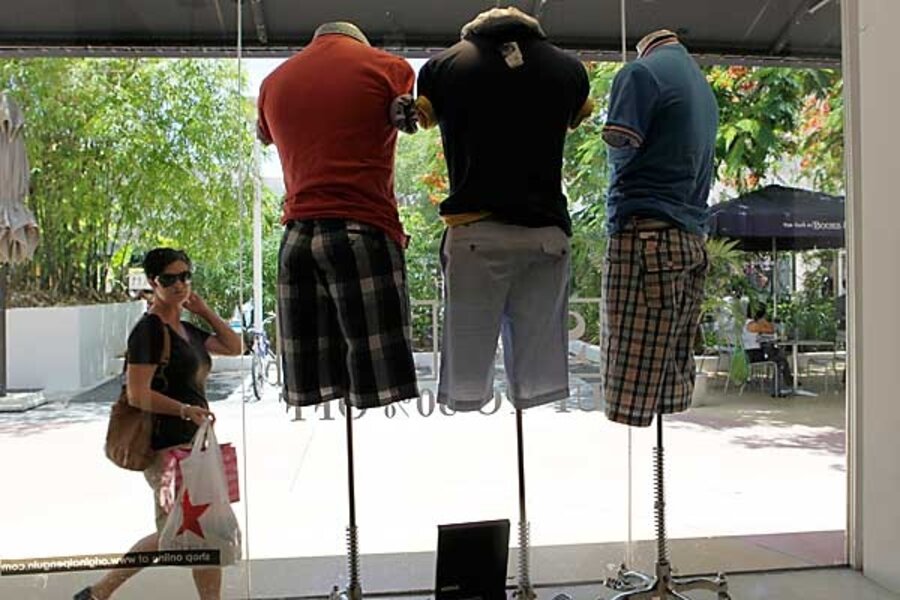History's lesson: No recovery without consumer spending
If the past is any guide, the US economy will depend on home-grown momentum to rise out of recession.
The history of upturns from economic slumps in America since the 1930s is straightforward: Consumers shoulder most of the burden. Often a big boost also comes from business investment, including home construction.
That lesson is part of what's weighing on Wall Street, with stock indexes Monday posting their worst day since early July. Investors are wondering whether US consumers will have the oomph to lift the economy, and corporate profits, in the year ahead.
The Dow Jones Industrial Average fell 2 percent Monday to close at 9,135.34. The fresh doubts about the vigor of a consumer-led recovery also tempered commodity prices. Oil dropped below $67 a barrel as traders focused more on weak demand than on tropical storms that threatened oil production sites.
If history lays a big burden on consumers, it also may offer some comfort to edgy Wall Street traders: Consumer spending tends to rise once the worst of a downturn has passed. That was true in the 1930s, even with a tide of home-loan defaults and with the stock market way down from its 1929 peak. It was true in the early 1980s despite high unemployment.
But the track record also shows that if consumers get off to a weak start, the economic recovery itself can be tepid. The latest example: For five straight quarters starting in 2002, consumer spending rose at annual rates below 2 percent. With business investment also slow, that period became a so-called "jobless recovery."
Another sobering history lesson is that there aren't many examples of exports or government stimulus (aside from war spending) lifting the economy. Perhaps President Obama's record $787 stimulus will be an exception. Typically, trade and government are forces at the margins, modestly tugging the gross domestic product up or down.
Maybe this time will be different on the trade front, if strong demand from China and other developing nations boosts demand for US exports. But many economists expect to see a trend already visible in recent months: both exports and imports recovering together.
"The United States is likely to lead rather than lag the global recovery, and we therefore expect imports to move up earlier and more sharply than exports," Nigel Gault, an economist at IHS Global Insight in Lexington, Mass., wrote last month.
Consumer spending in the US should rise next year, but by a tepid 1.7 percent, predict economists at Northern Trust Co. in Chicago. In a recent analysis, the company's Paul Kasriel and Asha Bangalore argue that home construction will stop its contraction by the end of this year. Yet they don't expect much momentum to come from business investment or home construction next year.
"There is concern being voiced that after the fiscal stimulus wears off, the economy will lapse back into a recession," the two economists say. "Anything is possible, but that does not necessarily make it highly probable. In the post-World War II era, once the U.S. economy has gained forward motion, it has maintained that forward motion until the Federal Reserve has intervened to halt it."





